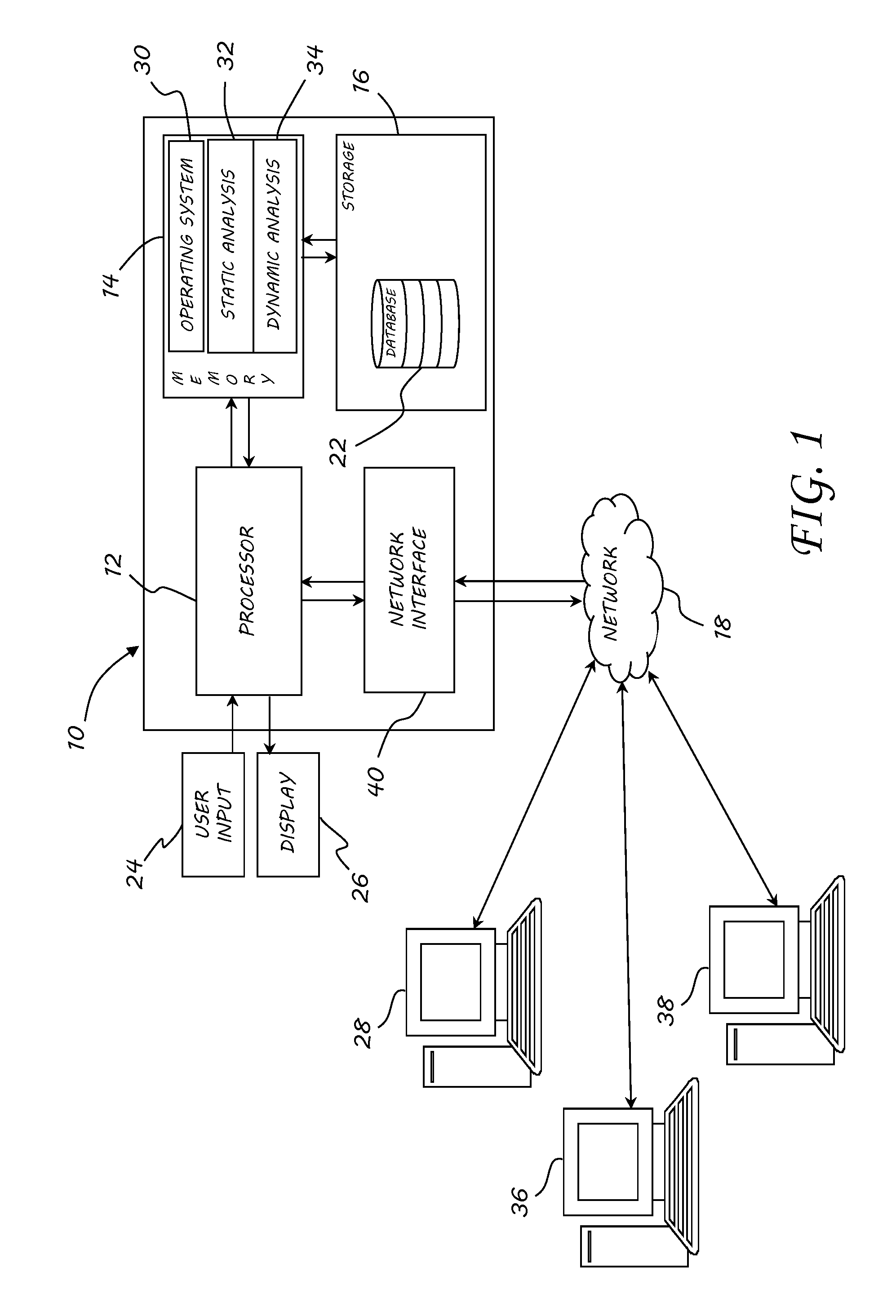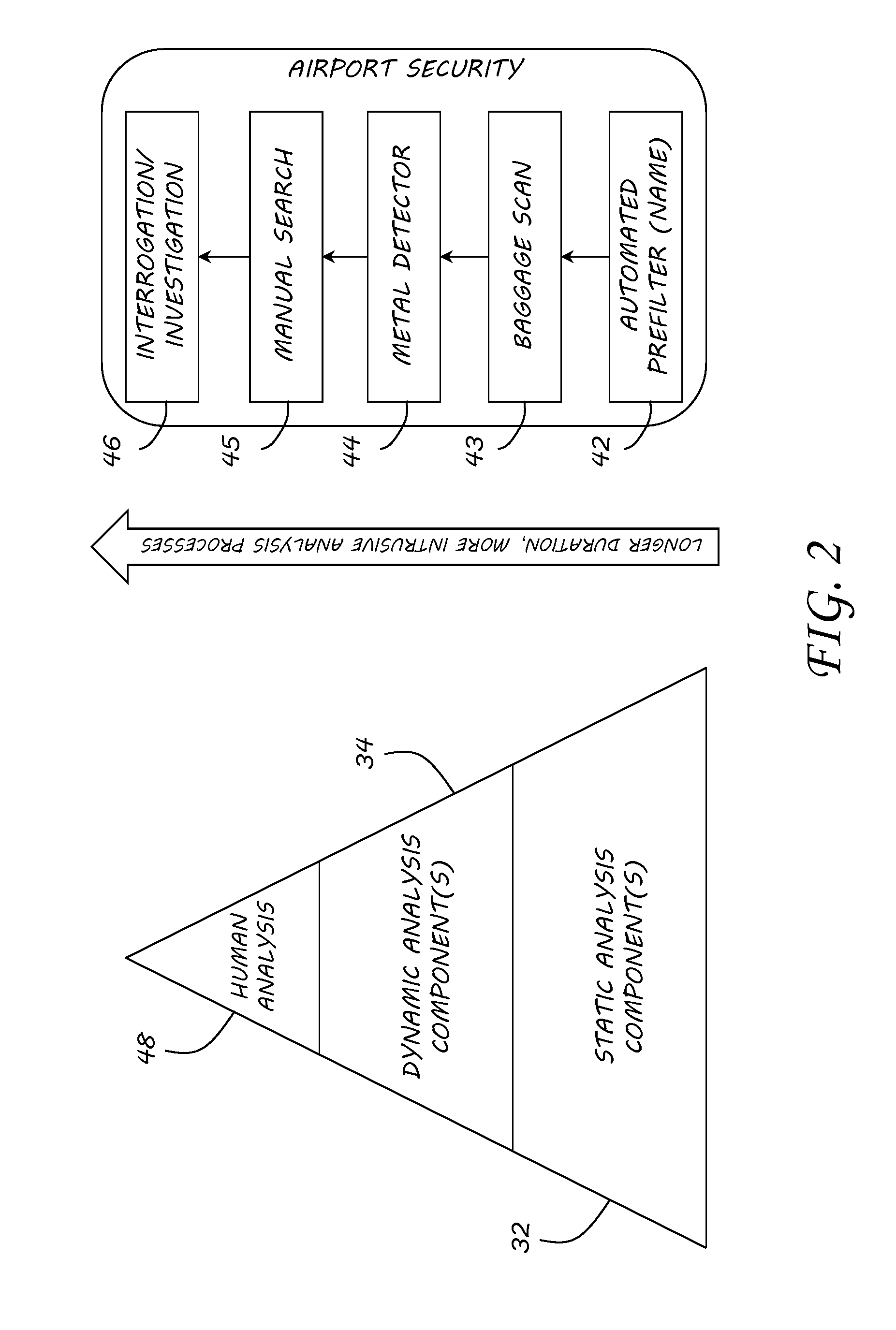Malware Target Recognition
a malware target and detection technology, applied in the field of computer and network security, can solve the problems of loss of data integrity for supervisory control and data acquisition, large amounts of valuable information vulnerable to digital theft, and many unwittingly exposed themselves to exploitation
- Summary
- Abstract
- Description
- Claims
- Application Information
AI Technical Summary
Benefits of technology
Problems solved by technology
Method used
Image
Examples
Embodiment Construction
[0034]With exponential increases in malware propagation, malware detection has become a robust research area in academia and industry. Heuristic analysis techniques generally fall into two distinct categories: static and dynamic. Static heuristics generally use non-runtime indicators, such as structural anomalies, program disassembly and n-grams. Alternatively, dynamic heuristics employ runtime indicators normally obtained in virtual environments, such as commercial sandbox applications.
[0035]Static analysis techniques do not require central processing unit (CPU) emulation or execution. And since emulation or execution not needed, they generally are more efficient methods of data reduction than dynamic analysis methods. For example, static analysis methods may utilize disassembly of program instructions, control flow analysis, or the frequency occurrences of byte strings.
[0036]Dynamic analysis techniques require CPU emulation or execution. These methods observe program behavior exte...
PUM
 Login to View More
Login to View More Abstract
Description
Claims
Application Information
 Login to View More
Login to View More - R&D
- Intellectual Property
- Life Sciences
- Materials
- Tech Scout
- Unparalleled Data Quality
- Higher Quality Content
- 60% Fewer Hallucinations
Browse by: Latest US Patents, China's latest patents, Technical Efficacy Thesaurus, Application Domain, Technology Topic, Popular Technical Reports.
© 2025 PatSnap. All rights reserved.Legal|Privacy policy|Modern Slavery Act Transparency Statement|Sitemap|About US| Contact US: help@patsnap.com



